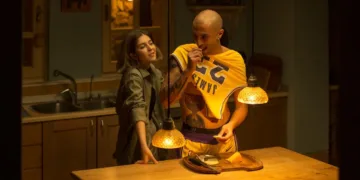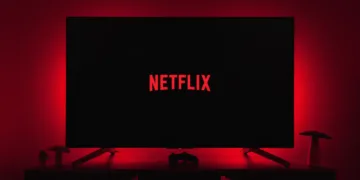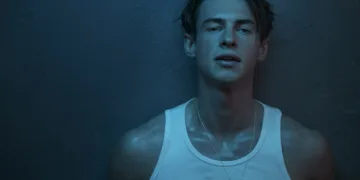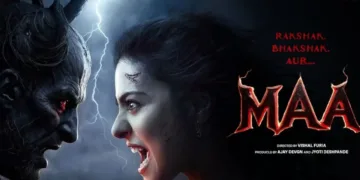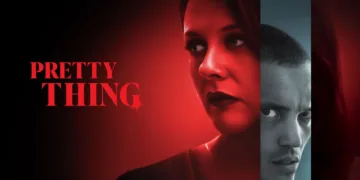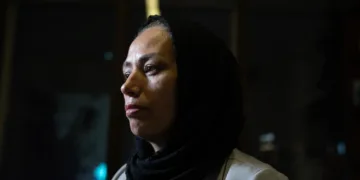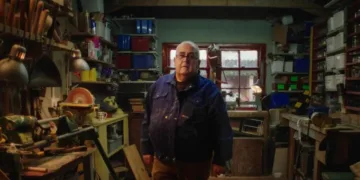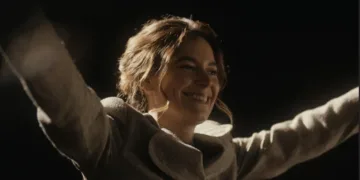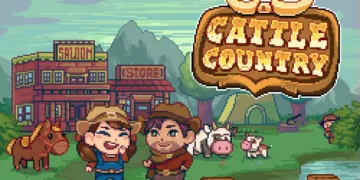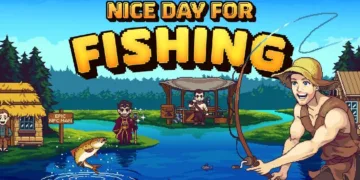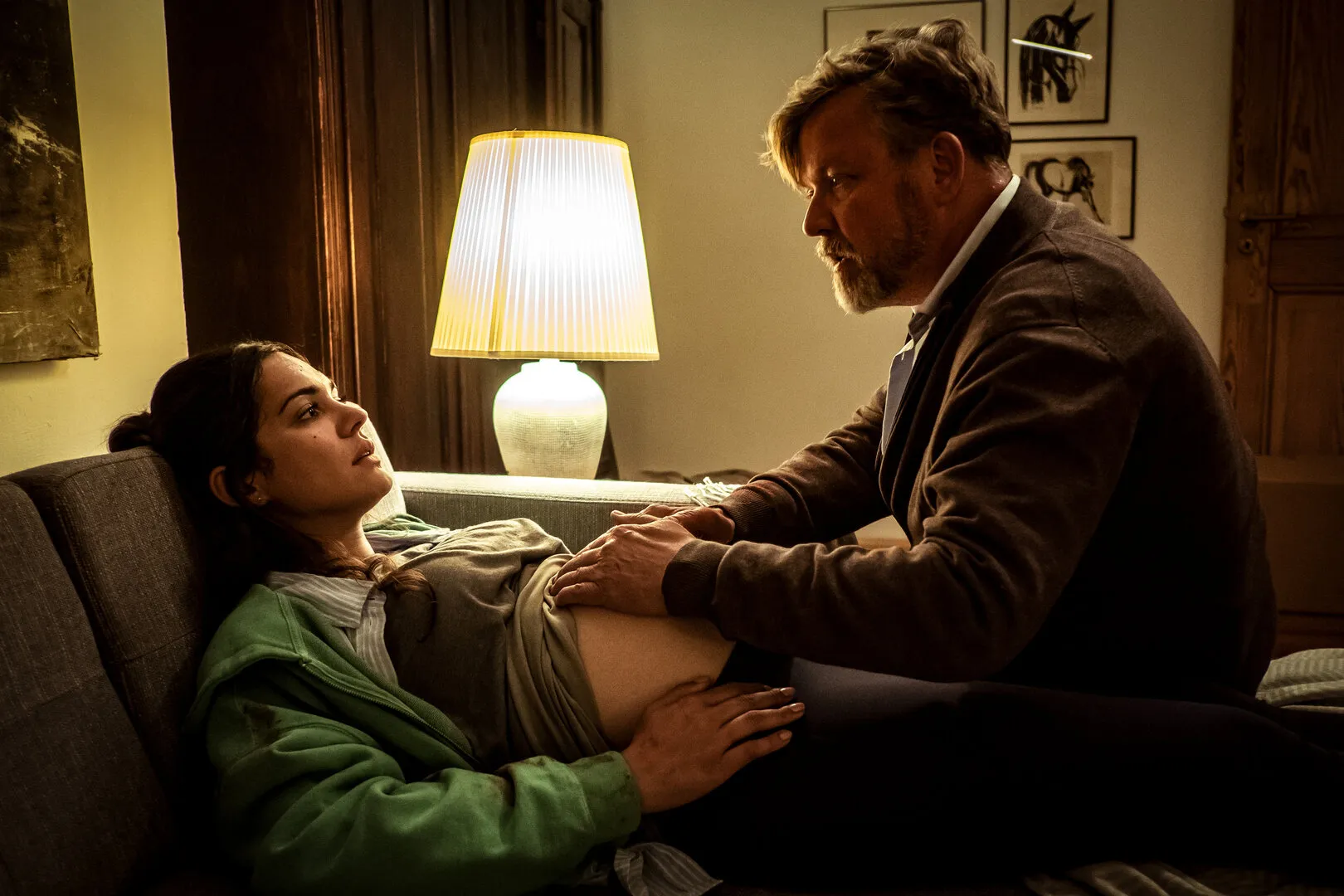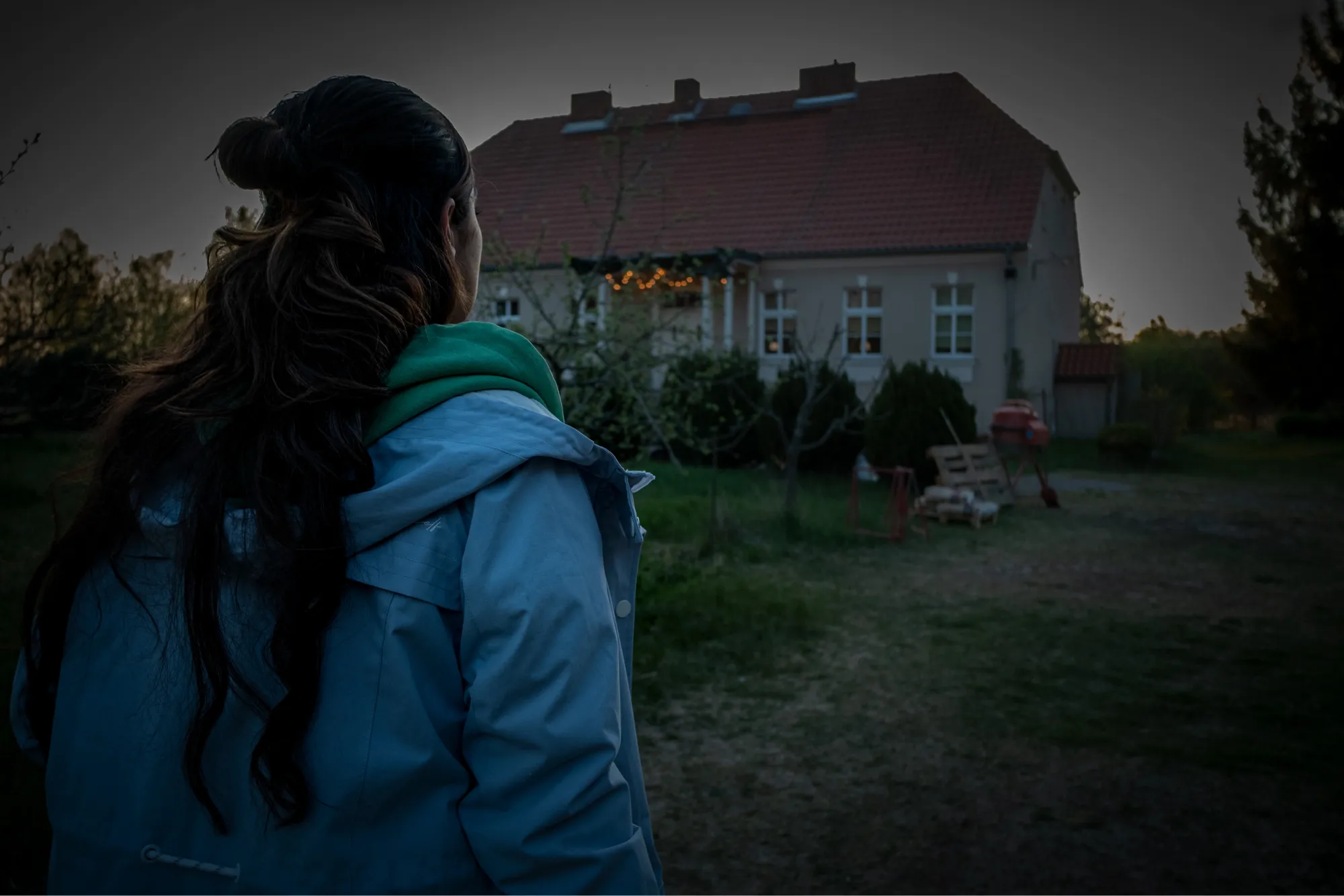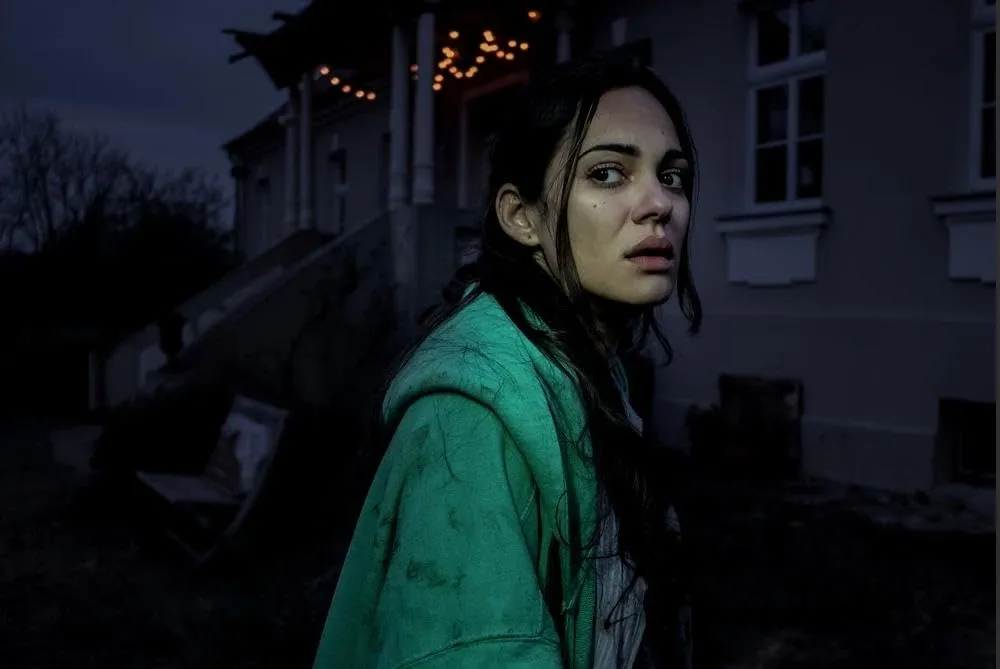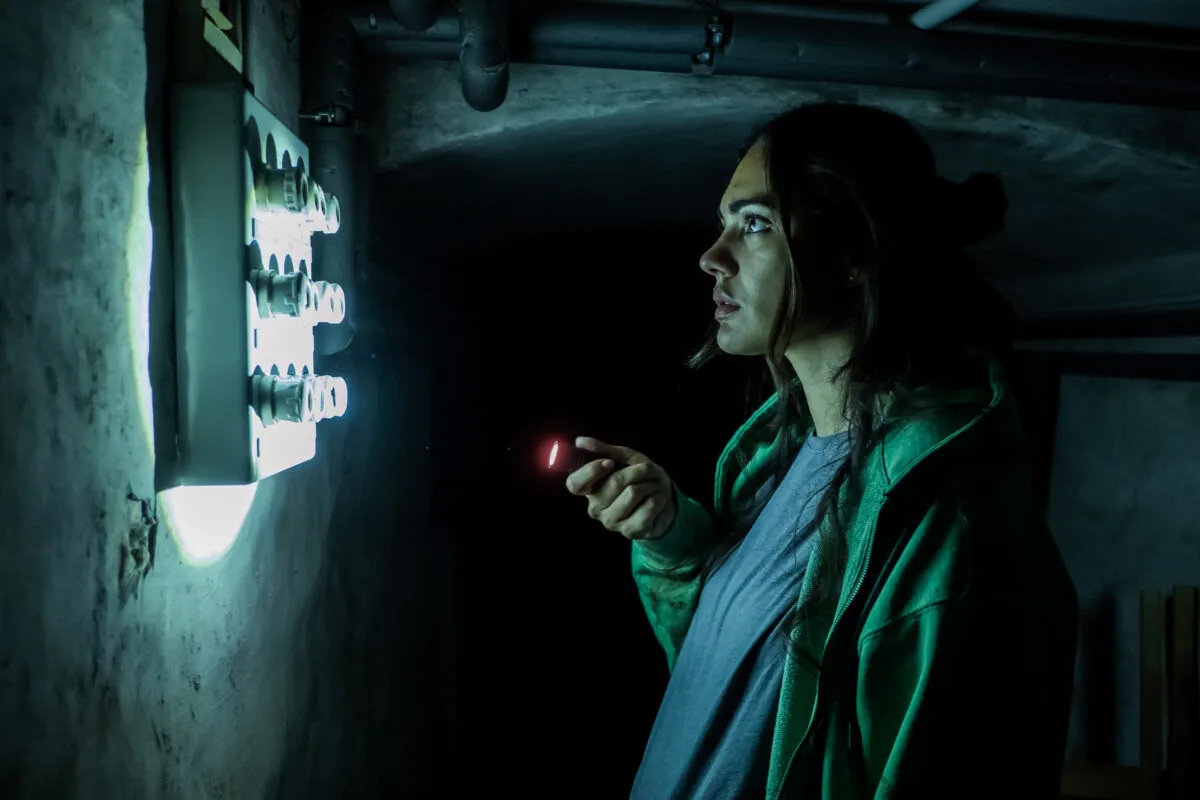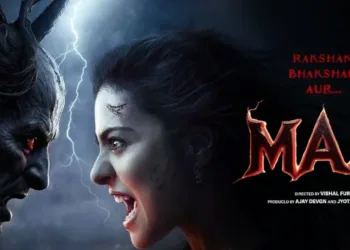The immediacy of a one-take film feels both thrilling and oppressive. Thomas Sieben’s Home Sweet Home: Where Evil Lives leans into this tension precisely, creating a horror experience that feels as claustrophobic as it does expansive. The film, released in late September, asserts its place in the genre not just as a haunted house story but also as a meditation on the echoes of historical horrors and the fragility of the human psyche. It’s a risky mix: a slow-burning psychological horror laced with occult themes, all unfolding in real-time via the ambitious lens of a single uninterrupted take—or, at least, the persuasive illusion of one.
The premise appears deceptively simple. Maria, played with raw and grounded passion by Nilam Farooq, arrives at her fiancé Viktor’s family home thirty-seven weeks pregnant and stressed by the impending makeover of the dilapidated rural house into a bed and breakfast.
With the occasional video call to Viktor or her father-in-law Wilhelm, she begins to piece together a menacing undercurrent within the house. The flickering lights, distant creaks, and a creeping sense of being watched foreshadow the deeper horror to come: a family secret linked to Germany’s colonial atrocities of the past, specifically the Herero and Nama massacres in what is now Namibia.
Sieben’s approach is simultaneously big and intimate. The one-take structure, frequently criticized as a gimmick, feels essential here—not just a display of technical prowess but a deliberate way of immersing the viewer in Maria’s world. It’s as if we’re tethered to her, unable to look away as the film alternates between moments of calm and startling terror. The camera moves through the house like a ghost, capturing every flicker of Maria’s unease, every shadow that seems to stretch just a little too long.
This creative approach heightens the film’s psychological tension, creating a tactile experience in which the viewer may share Maria’s increasingly fragile mental state. At the same time, the supernatural elements—brief apparitions, mysterious noises, and disturbing dream sequences—interact with the weight of history, blurring the line between the personal and the collective. It’s a daring narrative choice that questions whether the present can ever fully escape the evils of the past.
Lingering Shadows and the Weight of Time
A specific kind of horror thrives on patience. Home Sweet Home: Where Evil Lives is unwavering in its dedication to the gradual drip of revelation. Maria, played by Nilam Farooq with a sad mix of exhaustion and resilience, arrives at her fiancé Viktor’s ancestral house, a remote property that feels more like a mausoleum for unresolved histories than a prospective bed and breakfast.
Viktor is conveniently absent, hidden away at work, leaving Maria—37 weeks pregnant and exhausted—to face the house’s quirks alone. The premise is almost too familiar, but there’s something disarmingly intimate about watching Maria wander through the house, distracted by phone calls, flickering lights, and the frightening quiet of an empty, huge home.
Initially, the scares are whispers rather than yells. A light flickers here, and a shadow moves there. Tethered to Maria like an unseen companion, the camera captures apparitions she does not see. These early moments feel like a test of endurance—not only for Maria but also for the viewer. I’ll admit that I occasionally became impatient, wondering if the creeping dread would solidify into something substantial. But as Maria descends into the basement, the film strengthens its grip.
What she discovers there—a hidden room brimming with war mementoes and the brittle words of a journal—shifts the narrative into the darker, more urgent territory. The journal entries revealing her fiancé’s great-grandfather’s role in the Herero and Nama genocides feel nearly too weighty for the film to carry. The word “Atone,” scrawled in blood, is both a command and an indictment, a horrific punctuation mark on the house’s colonial legacy. I couldn’t help but wonder if the film’s goals were too great for its runtime—can a single house, a single night, bear the weight of such history? Nonetheless, there’s a terrifying beauty to the way these revelations are interwoven into the story as if the house were exhaling its long-held secrets.
When Wilhelm, Maria’s father-in-law, arrives, the film is unexpectedly harsh. What begins as a story of spectral guilt evolves into something more urgent, more physical, as Wilhelm uncovers a deeper, more personal horror. When the film reached its weird dream sequence—a moment so fluid and disorienting that it felt like slipping underwater—I was both enthralled and uneasy. The pacing, which was initially slow, suddenly gallops toward its conclusion, leaving little room to consider the consequences of what is happening.
Determining whether this inconsistent rhythm is a problem or a feature is difficult. With its deliberate pacing and understated scares, the first half veers toward repetition yet rewards the patient. With its jagged revelations and growing danger, the second half feels like completely another film. Perhaps this is the point: horror, like history, does not unroll smoothly. It lingers, erupts, and then leaves you alone with the echoes.
The Solitude of Survival
An actor must be daring while carrying a story nearly entirely on their shoulders. Nilam Farooq accomplishes this in Home Sweet Home: Where Evil Lives, embodying Maria with a consistently lived-in performance, as if the weight of her character’s physical and emotional state has soaked into her very bones.
As I saw Farooq navigate Maria’s fear, exhaustion, and quiet persistence, I wondered how infrequently pregnant women in film can exist as multifaceted protagonists. Maria is neither a saint nor an infant—she is a woman on the verge of childbirth, traversing the liminal space between life and death, hope and terror. Farooq’s performance is not showy, but it doesn’t have to be. Instead, her subtle shifts—the glimmer of dread in her eyes and the way her breathing quickens as shadows creep in—make each moment feel terrifyingly real.
However, Maria’s isolation is more than just physical. Viktor (David Kross), her fiancé, appears mostly as a voice on the other end of a video chat, his worry for her obvious yet distant. Their connection, while sweet, feels purposefully broken, with his absence leaving Maria (and, by implication, the audience) to bear the increasing dread alone.
Meanwhile, Wilhelm (Justus von Dohnányi) arrives late but with a seismic impact, his calm authority hiding the horrible revelations he bears. His role as the guardian of the family’s evil legacy seems almost too simple. Still, Dohnányi imbues him with a quiet menace that lingers long after his revelations.
The film’s emphasis on Maria is at the price of greater character development for the others. Viktor is sketched so thinly that he feels more like an idea than a person, while Wilhelm, despite his narrative importance, stays unclear.
I couldn’t help but want additional moments—fragments of memory, discussion, or conflict—that would have allowed these relationships to feel as haunted as the house itself. Perhaps this is the point: Maria, like the audience, is left to fill in the blanks, to conjure histories that are just out of grasp. But I’m wondering if, in doing so, the film compromises some of its emotional impact in favour of mystery.
A Dance of Shadows
The one-take style has an undeniable allure—an audacious cinematic high-wire act in which every movement and moment must flow into the next with precision and intent. In Home Sweet Home: Where Evil Lives, Thomas Sieben uses this technique as an immersive, even claustrophobic storytelling device, rather than a gimmick.
The camera becomes an unseen presence, tethered to Maria like a ghost that neither helps nor harms, lingering just close enough to make us feel implicated in her rising dread. The technical difficulty of this approach is startling; it necessitates rigorous planning and an extraordinary synchrony between the cast, crew, and environment. It’s a feat of choreography disguised as an effortless movement. While I occasionally questioned if the effort was worthwhile, the result is undeniable: we’re locked in time with Maria’s spiral into unease.
What struck me the most was the camera’s movement. Its hand movements reflect Maria’s mounting worry, swaying slowly in moments of relative quiet before jolting forward as her fear intensifies. The house becomes a character in this ballet, with dim passageways and flickering lights working together with the lens to keep us on edge. I couldn’t help but note how alive the lighting appeared—flickers and shadows reaching across the screen as if the house were breathing. It’s particularly uncomfortable to watch Maria struggle through a space where the light refuses to stay constant as if the house resents her presence.
Then there’s the dream sequence, a quiet moment I almost missed. One might expect a break in the one-take illusion here. Still, Sieben resists merging the bizarre into the real while maintaining the film’s hypnotic flow. The passage feels weightless yet stifling as if Maria has slipped through the seams of her own reality. It’s a disorienting moment, and I wondered if I’d imagined the transition—a testament to how seamlessly it is handled. In these moments, the camera ceases to function as a tool. It transforms into something entirely other, living and complicit.
The Quiet Violence of Fear
The horror in Home Sweet Home: Where Evil Lives is not loud or pretentious. It does not rely on gore or repeated jump scares to frighten its audience. Instead, it whispers—softly and persistently—until you begin to hear echoes in your mind.
The ghostly apparitions, for example, are temporary but deliberate, caught on the outskirts of the frame, half-seen and half-imagined. This approach is cruelly brilliant: the ghosts are there for us, not Maria. We see them watching her, lingering in doorways or corners of rooms, and the tension stems not from their unexpected presence, but from their unsettling stillness. It’s a voyeuristic kind of scare that makes you feel implicated in their presence as if your look alone had invited them.
The house is a character in this horror, a labyrinth of creaking floors, flickering lights, and shadows that appear to stretch and contract like living things. Despite its vacancy, it does not feel abandoned; it feels like it is waiting. The rural isolation of the setting exacerbates this unease. There is no escape for Maria, no surrounding lights in the distance, just an oppressive light that feels heavier with each passing moment. The pace mirrors the gradual, smothering tension. The film’s first half is almost maddeningly restrained, with each scare feeling like a little pinprick rather than a sharp stab. When the tension finally breaks, it feels both cathartic and sad, as if the house has been holding its breath all along.
The refusal of the film to lean too heavily on jump scares intrigued me the most. They’re present, of course—no horror film is complete without them—but they’re utilized sparingly and almost reluctantly. Far more memorable is the psychological horror, the lingering dread of knowing something is amiss but unable to identify it. The scares do not end when Maria leaves a room; they follow her and, by extension, us. It’s the kind of fear that lingers in the back of your mind long after the credits roll, like a shadow you can’t shake.
Echoes of the Past, Shadows of the Present
Home Sweet Home: Where Evil Lives achieves something unusual: it looks beyond the more well-known tragedies of the twentieth century to the Herero and Nama genocide, one of colonialism’s many blood-soaked legacies. Horror is frequently at its most effective when it roots its terror in history.
The house, with its hidden room and journals, becomes more than just a source of personal horror; it also serves as a vessel for historical reckoning. The ghosts here are more than just restless spirits; they are the echoes of imperial violence resulting from misdeeds hidden behind generations of silence. It’s frightening to consider how horror films frequently use generic “ancient curses” or nameless demons, while Sieben’s haunting is anchored in a specific, genuine atrocity.
However, I found myself wondering if the film did enough with this. The theme of intergenerational guilt is compelling, but it feels like a frayed thread, a question raised but never fully explored.
Instead, the concept of collaboration lingers—not just in the past, but also in the present. The word “Atone,” scrawled in blood, feels like an indictment directed at the characters and the audience. How often do we look away, preferring comfort to confrontation? The film doesn’t answer this question and doesn’t appear to know how. Nonetheless, the concept resonates, particularly through Maria herself. Her pregnancy transforms from a source of vulnerability to one of resilience. She is delicate yet indomitable—a reminder that survival can be an act of resistance.
A Fragile Balance Between Craft and Depth
Home Sweet Home: Where Evil Lives’ technical audacity is undeniable. The one-take style, a feat of choreography and precision, intensifies the immersive aspect of the film, pulling the audience into Maria’s collapsing world with almost stifling intimacy.
Nilam Farooq’s performance is the film’s throbbing heart—her ability to portray fear, exhaustion, and quiet strength without ever descending into melodrama feels achingly authentic, grounding even the most strange moments. Despite its restraint, the film creates a constant buzz of unease, establishing tension that lingers long after the screen goes dark.
Despite its technological virtuosity, the narrative feels light, as if it cannot bear the weight of its thematic goals. Beyond Maria, the characters are mere whispers of ideas. While intriguing, the film’s exploration of colonial guilt and intergenerational trauma feels more implied than realized. I wished Sieben had allowed the story to breathe, delving deeper into its rich undercurrent rather than leaning so heavily on mood at times.
Nonetheless, something intriguing about the film’s willingness to experiment is its ability to balance its terrifying visuals with a larger cultural criticism. Home Sweet Home is a reminder that horror, at its best, is as much about the questions it leaves unanswered as the concerns it brings to light.
The Review
Home Sweet Home: Where Evil Lives
Home Sweet Home: Where Evil Lives is an ambitious blend of technical prowess and atmospheric horror, led by Nilam Farooq's captivating performance. The one-take structure provides an immersive, claustrophobic experience. Still, the sparse narrative and underdeveloped themes—particularly the exploration of historical atrocities—leave an emotional blank. While the scares are memorable and the visuals impressive, the film feels more like a technique demonstration than a completely completed story. Still, it's a must-see for fans of innovative filmmaking and slow-burn tension.
PROS
- Impressive one-take cinematography that creates real-time immersion.
- Nilam Farooq delivers a standout, emotionally resonant performance.
- Haunting atmosphere with effective use of lighting and sound.
CONS
- Thin narrative that struggles to support the film’s ambitious themes.
- Underdeveloped supporting characters limit emotional connection.
- Occasional pacing issues, with a slow first half that may test patience.
















